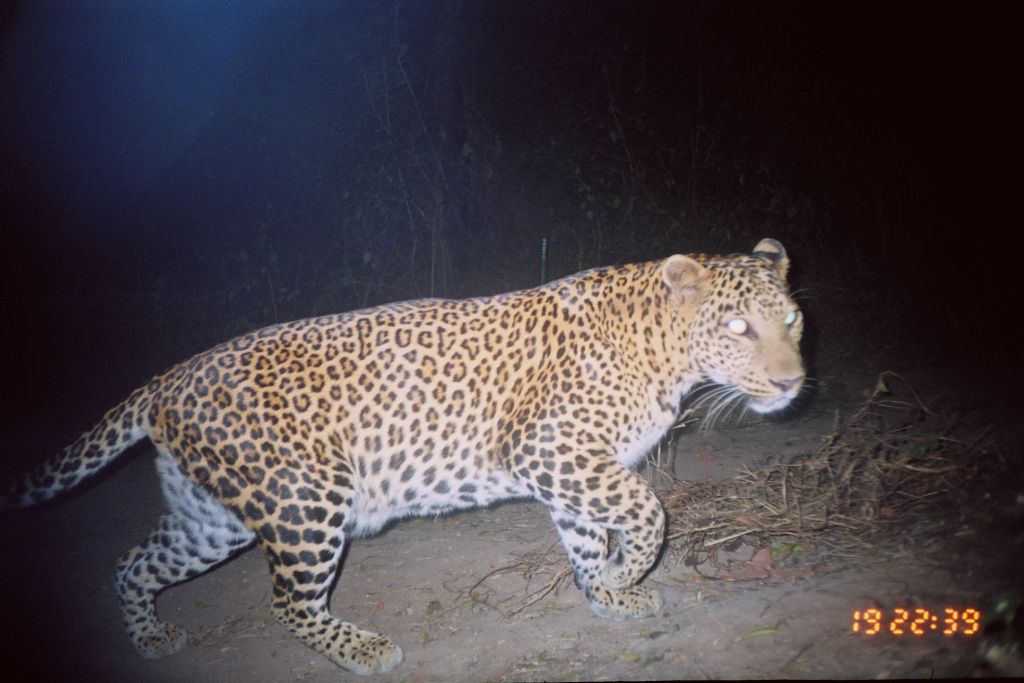Big Cats Eat Dogs in India, Leopard Poop Reveals

Leopards that roam rural India have a surprising favorite food: dogs.
The big cats even seem to prefer eating domestic dogs in areas where cows, goats and other farm animals are plentiful, according to a new study.
To reconstruct leopard diets, scientists had to take a close look at leopard poop. A team led by researchers with the Wildlife Conservation Society scooped up 85 leopard fecal samples as they scoured footpaths, dried-up streams and fields in a rural section of western Maharashtra (the same state where Mumbai is located). Back in a lab, the researchers looked for signs of claws, hoofs and hair and other indigestible parts of unlucky prey in the scat. [See Photos of Leopards in Western Maharashtra]
The researchers found that domestic dogs were by far the most common prey, making up 39 percent of the leopards' diet (in terms of biomass). The remains of domestic cats were found in 15 percent of poop samples and accounted for 12 percent of the mass of leopards' meals.
By comparison, livestock were a relatively small portion of the leopard diet. Domestic goats, for example, accounted for just 11 percent of the mass of the big cats' meals, even though they were seven times more abundant than dogs in the study area.
All told, 87 percent of the leopards' diet was made up of domestic animals, including both livestock and pets; this suggests the leopards, though considered wild, are completely dependent on human-related sources of food. The small portion of the wild animals in the leopards' diet consisted of mostly rodents, as well as civets, monkeys, mongooses and birds.
The study illustrates just how big of an impact people have on the lifestyle of leopards that live in human-dominated landscapes. The largely agricultural study area around the town of Akole did not contain any natural patches of forest, and the nearest protected area was the Kalsubai Harishchandragad Wildlife Sanctuary, 11 miles (18 kilometers) to the west.
Sign up for the Live Science daily newsletter now
Get the world’s most fascinating discoveries delivered straight to your inbox.
The researchers speculated that domestic animals make easier prey, because they lack anti-predatory behavior, unlike their wild counterparts. And free-roaming dogs might be particularly easy targets, because they likely are not as heavily guarded as economically valuable livestock.
"During the past two to three decades, legal regulation of leopard hunting, increased conservation awareness and the rising numbers of feral dogs as prey have all led to an increase in leopard numbers outside of nature reserves in agricultural landscapes," study researcher Ullas Karanth, the Wildlife Conservation Society's director for Science-Asia, said in a statement. "While this is good news for conservation and a tribute to the social tolerance of Indian people, it also poses major challenges of managing conflict that occasionally breaks out. Only sound science can help us face this challenge."
In rural areas, human-leopard conflict is more likely to be related to people's fears of leopards and the sentimental value of pets like dogs, Karanth and colleagues said.
Their findings were published today (Sept. 11) in the journal Oryx.
Follow Megan Gannon on Twitter and Google+. Follow us @livescience, Facebook & Google+. Original article on Live Science.










